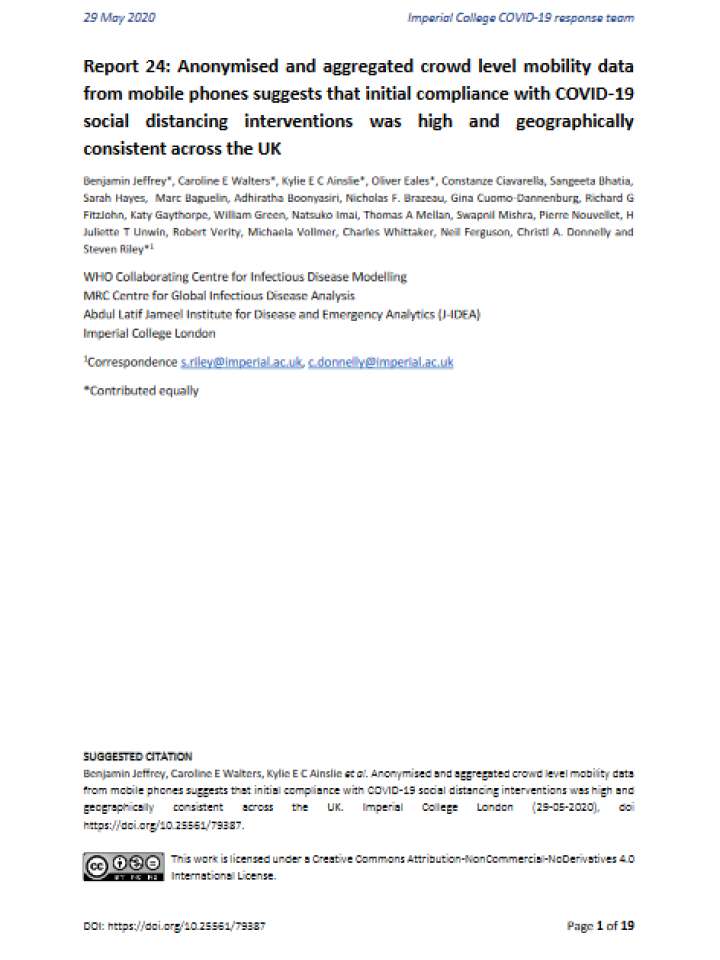Report 24 - Anonymised & aggregated crowd level mobility data from mobile phones suggests initial compliance with COVID19 social distancing interventions was high & geographically consistent across UK
Since early March 2020, the coronavirus disease 2019 (COVID-19) epidemic across the United Kingdom has led to a range of social distancing policies, which have resulted in reduced mobility across different regions. Crowd level data on mobile phone usage can be used as a proxy for actual population mobility patterns and provide a way of quantifying the impact of social distancing measures on changes in mobility.
This study uses two mobile phone-based datasets (anonymised and aggregated crowd level data from O2 and from the Facebook app on mobile phones) to assess changes in average mobility, both overall and broken down into high and low population density areas, and changes in the distribution of journey lengths. The research shows that there was a substantial overall reduction in mobility with the most rapid decline on the 24th March 2020, the day after the Prime Minister’s announcement of an enforced lockdown. Slightly larger reductions in average mobility in high-density areas than in low-density areas, have been observed, with greater variation in mobility in the high-density areas: some high-density areas eliminated almost all mobility.
Explore further
